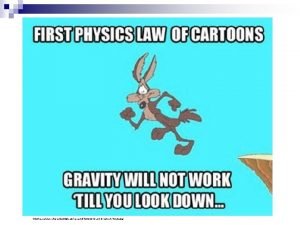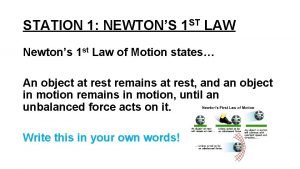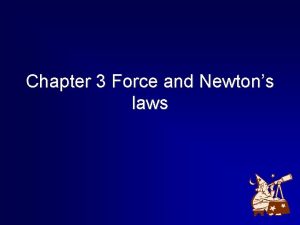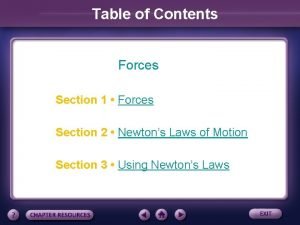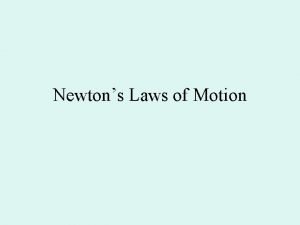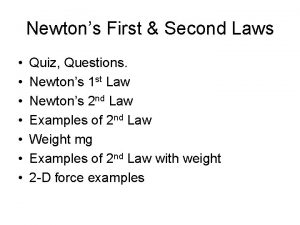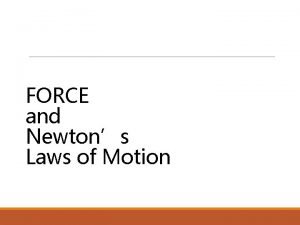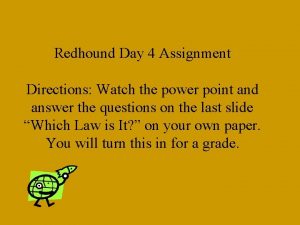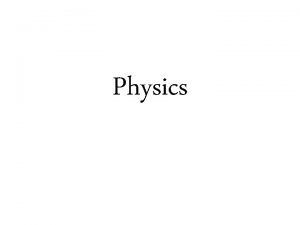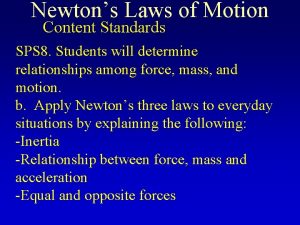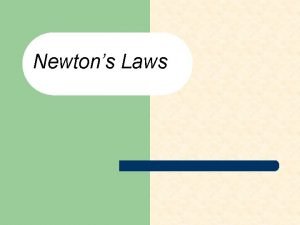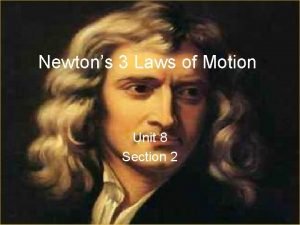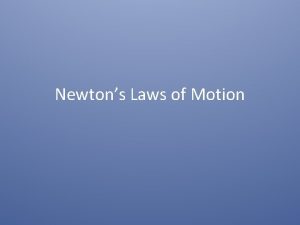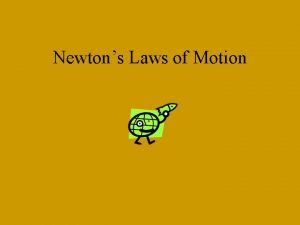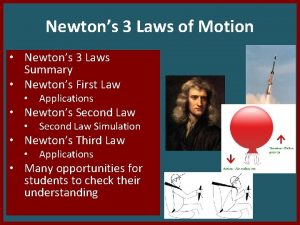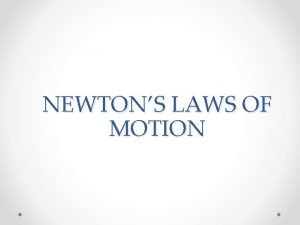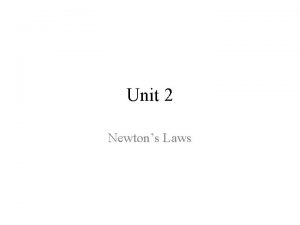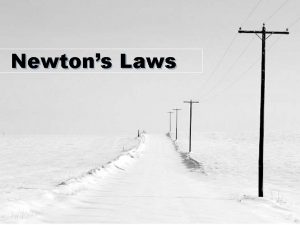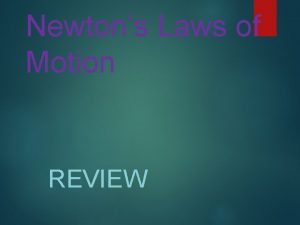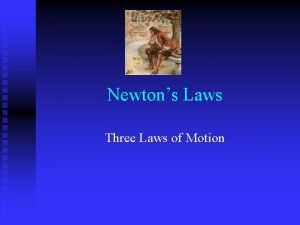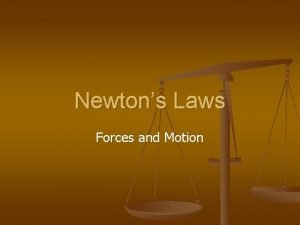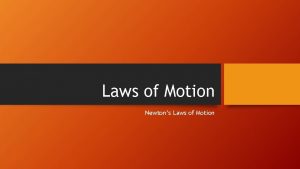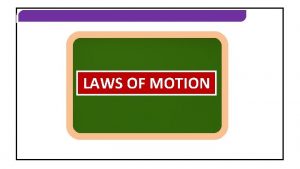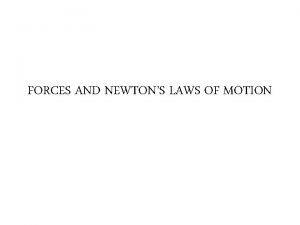Newtons Laws of Motion Newtons Laws Newtons First






















- Slides: 22

Newton’s Laws of Motion

Newton’s Laws Ø Newton’s First Law • Law of Inertia Ø Newton’s Second Law • Ø Newton’s Third Law • Law of Action and Reaction Ø Law of Universal Gravitation •

Mass Ø …is the amount of “stuff” in an object. Ø …is measured in kilograms. Ø …is the measure of the inertia of an object. Ø Inertia is the natural tendency of a body resist changes in motion.




History of Inertia Ø Aristotle (384 -322 BCE): “…a constant force will yield a constant speed. ” Ø Jean Buridan (1300 -1358): believed that objects stayed in motion because they possessed “impetus” – something inside that makes them continue to move. Ø Galileo Galilei (1564 -1642): challenged the commonly held belief that an object’s motion was the result of continued force. Instead, he viewed uniform motion as being a state just as natural as rest. OK!

Galileo’s Thought Experiments on Motion Ball drop from leaning tower of Pisa Ø Galileo’s Inclined Planes Ø

Force Ø …is a push or pull that changes the velocity of an object. Ø …is a vector quantity. Ø. . . measured in Newtons.

Newton’s First Law of Inertia Ø “A body remains at rest or moves in a straight line at a constant speed unless acted upon by a force. ” Ø The more massive the object, the greater the tendency to keep doing what it is already doing. Ø

Newton’s First Law Ø No mention of chemical composition Ø No mention of terrestrial or celestial realms Ø Net force required when object changes motion Ø Acceleration is the observable consequence of forces acting

Newton’s Second Law The Sum of the Forces acting on a body is proportional to the acceleration that the body experiences SF a S F = (mass) a

Net Force

Newton’s Third Law Ø Action-Reaction Ø For every action force there is an equal and opposite reaction force

The Law of Gravity Every mass exerts a force of attraction on every other mass. Ø The math… Ø FG = 6. 67 10 -11 N·m 2/kg 2

Gravity Questions Ø Did the Moon exert a gravitational force on the Apollo astronauts? Ø What kind of objects can exert a gravitational force on other objects?

Gravity Questions Ø The constant G is a rather small number. What kind of objects can exert strong gravitational forces? Ø If the distance between two objects in space is doubled, then what happens to the gravitational force between them?

Weight Ø The weight of an object Fg is the gravitational force acting downward on the object. Ø Fg = m g

Tension (Tensile Force) Ø Tension is the force in a string, chain or tendon that is applied tending to stretch it. Ø FT

Normal Force Ø The normal force on an object that is being supported by a surface is the component of the supporting force that is perpendicular to the surface. Ø FN

Coefficient of Friction F Kinetic Friction • F f = m k. F N Ø Static Friction • F f m s. F N Ø In most cases, mk < ms.

On to problems. . .
 Newtons laws od motion
Newtons laws od motion Newtons first lw
Newtons first lw Law of newton 3
Law of newton 3 Newton's 3 laws of motion
Newton's 3 laws of motion Newtons first law of motion meme
Newtons first law of motion meme Newton first law
Newton first law Newton's laws
Newton's laws Newtons laws of gravity
Newtons laws of gravity Newton's 3 laws
Newton's 3 laws Newtons laws of gravity
Newtons laws of gravity Section 3 using newton's laws
Section 3 using newton's laws Section 3 using newtons laws
Section 3 using newtons laws Abcd8n
Abcd8n First law of motion facts
First law of motion facts Newton's first and second law quiz
Newton's first and second law quiz Newtons laws definitions
Newtons laws definitions What are newton's three laws
What are newton's three laws Newtons law
Newtons law What is newtons law
What is newtons law Law of inertia examples
Law of inertia examples Newtons laws
Newtons laws 3 laws of newton
3 laws of newton Law of force and acceleration
Law of force and acceleration




